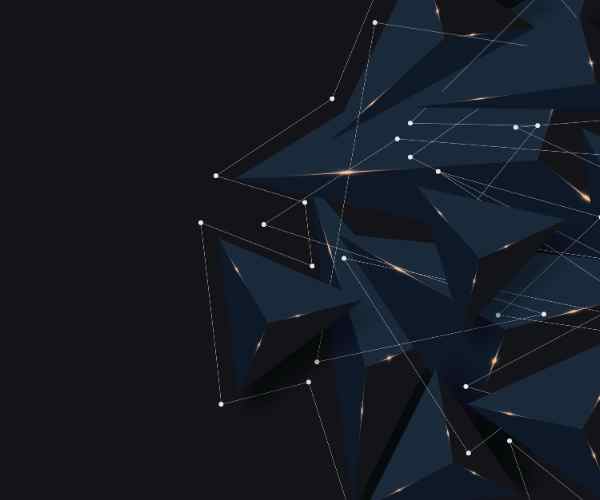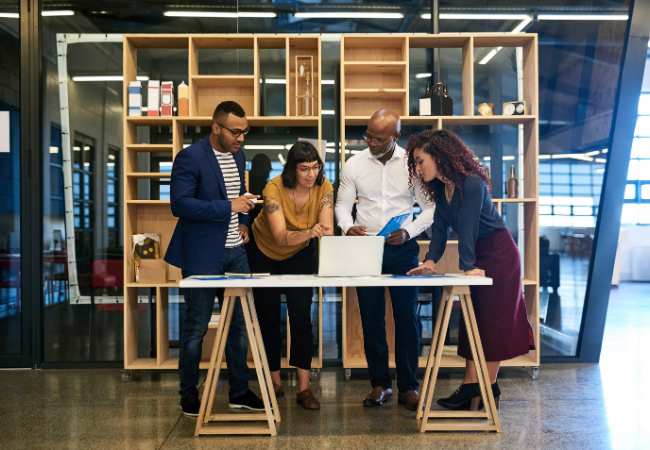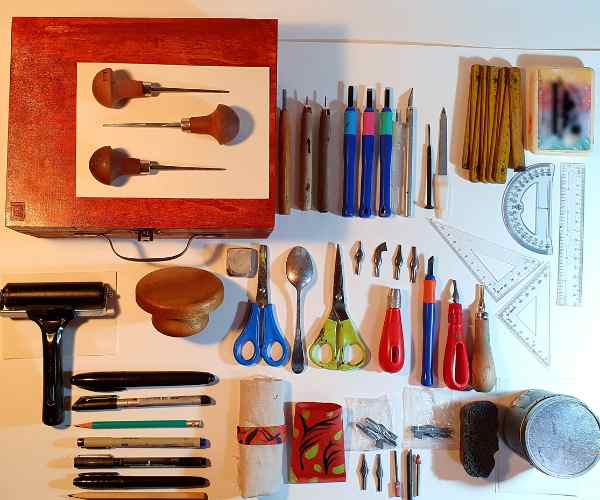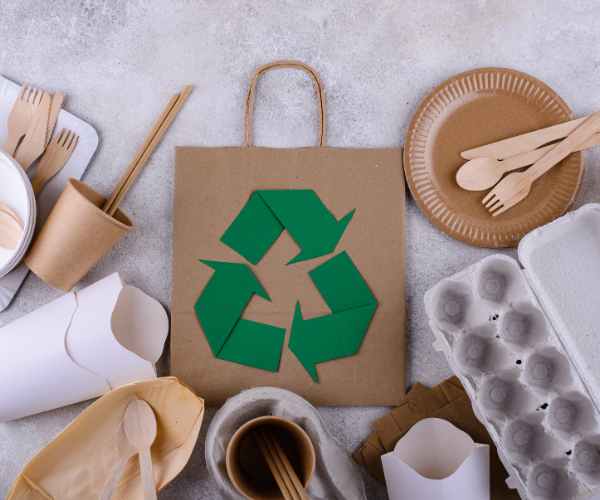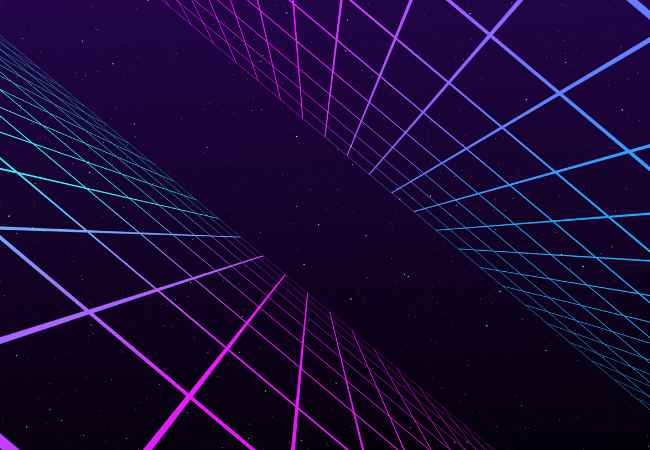The employment of virtual reality in design endeavors is modifying the way we think and work on projects in a completely different way.
I have to admit that the very first time I experienced virtual reality, I was mesmerized by the simulation. I felt like I had entered a domain where the boundaries of inventiveness were intertwined with digital products. What is important for the design industry is that VR enables us to move far beyond our physical spaces and transport us into completely unfamiliar ones.
Here is a great example: Even before a space has ever been created, a user can walk through it as if it were there, or touch and feel a product that has not yet been made. Things such as these used to be out of reach, but this technology is making it possible. Clients may now not only see the designer’s concepts, but they can also give life to them and experience them firsthand. It is truly like making a dream come true and the buzz about its future possibilities is quite evident.
As we look deeper into this discussion, we will find out that VR is not just a tool ‘to design’ but a game changer in every field of design from interior to fashion and then product modeling. This technology has become a great tool for those culturally engaged individuals whose creativity needs have often outstripped what was technically feasible and then provided an invitation to create and design differently.
The Transformation of Design Through the Use of Virtual Reality
Defining the concept of virtual reality
Essentially, Virtual Reality also known as “VR” in wide circles is a computer generated technology that allows users to somehow interact over a simulated 3D environment using some specific hardware and software. Think about it: You place a headset over your eyes and out goes the real world into the background as you engage with a new world. This enthralling experience is made easy using three basic factors:
Hardware: This ranges from VR helmets, sensors to gloves that are equipped with the ability of interacting in a VR world. Oculus, HTC and several other technology companies are focusing on developing affordable and high quality VR equipment.
Software: The software applications and platforms which develop these realistic experiences. Designers use software tools to design environments that users can visit ranging from a simple house to a sophisticated building.
Immersive Experiences: The beautiful part is when these components are brought together, alternate realities are possible. Because with the aid of the design works, construction projects, VR enables someone to feel as though they are in completely other locations.
A Brief History of VR in Design blogs.reading.ac.uk
The history of virtual reality is really intriguing, the reality is almost like science fiction but the concept has evolved from the 1960s start which relied on computer graphic and immersive environments. In the 1980s the term ‘virtual reality’ was introduced but there are a couple of important events which have allowed for the technology to be used in other fields:
The Decade of 1990: Even though the VR systems introduced in the 1990s were rather difficult and limited to use they were still the first commercially available VR. Because of these limitations designers had to think outside the box as they started using this novel technology as an enhanced means of making engaging homes and making appealing prototypes.
Early 2000’s: Moving on from the 90’s, designers began to massively encourage the fast evolving technology with the use of VR alongside architecture and urban planning’s conjunction, there was much better use of virtual reality as it allowed large scale projects to be visualized such as spaces before they had even been built.
2010 Onwards: There was a direct relation with the rise of the use of VR and the period of 2010 onwards due to the introduction of VR headsets like the Oculus Rift and Google Cardboard, these in your face to designs allowed for a spike in the use of the newly emerging technology. Various creative professionals from across the globe began to grasp its potential for further enhancing presentations to clients introducing collaborative designs which speak for themselves.
It is gratifying to examine the results of this advancement and I can clearly see how much progress we’ve made. The thought of such being the case can be looked at as disconcerting, but I hope it serves to assure you that in many areas of design what was thought of as a Holy Grail not too long ago is now commonplace.
Transforming construction projects with VR
Redefining How Clients Experience a Space
The best part of VR is how it revolutionizes client experiences. Traditional design presentations are often based on still renderings or hand-drawn images, but in this case, with VR, they get to walk into their future spaces . Even before they’ve even been built.
For example, I once worked on a project where I partnered with a small architect company that was developing a community center. There was uncertainty on the part of the client and how the different areas would integrate. Thanks to VR technology, the team in charge of designing the center modeled the building in three-dimensions. When clients put on the headsets, they simply walked through the building seeing in person how it was structured and how big it was in that format. They learned how it would feel to stand inside the building while construction materials were missing. They learned how the windows were positioned and the intricate architecture surrounding them. The design was further refined thanks to their input which combined with the simulation alleviated client concerns.
Optimization of Design Tasks
For any design task, collaboration stands out as a key factor, and with the use of virtual reality technology, fostering a sense of teamwork is likely to be much easier. Wouldn’t it be wonderful for a group of design experts who are miles apart, to work on their project together as if they were in a single room?
For instance, one case involved a team of product designers employed by a tech firm who decided to integrate VR into their practises in an attempt to enhance their flow. They worked in a virtual office where they were able to collaborate with each other in the same room, irrespective of their geographical location. With this virtual environment, the designers were able to interact with three-dimensional models, communicate ideas and work through problems together without barriers of any kind, remote or otherwise. All this culminated in the design process becoming much more integrated, with decisions being made much faster, all leaving a much more polished end product.
Improved modeling and visualization of concepts
One of the key advantages of using VR technology is that it is possible to produce virtual models, which minimizes both product development times and costs. In this way, instead of having to create many physical objects, a designer is able to make a virtual model which reflects what the designer has in mind.
Let’s take the case of an architect who is given the job of designing a new residential building. But rather than construction scale models or drawings they had developed together with their clients the architect, first presented the entire project through VR technology as a three-dimensional model with all the details incorporated into it. The clients were able to examine various configurations, experiment with various concepts, and even imagine how the structure would look in relation to its surrounding area. This technique enhanced at once all sense of comprehension of the end product, and permitted changes to be made in the last minute improving the design even more.
Industries Benefiting Vividly With Designing with The Aid of Virtual Reality
Architecture and Interior Design
In fact, the excitement that I feel when I think of the much-acclaimed virtual reality (VR) as it affects and applies in architecture and interior design is better imagined. Just think of being able to walk in a building that is yet to be constructed. In such cases, VR applications expected of these units are especially the virtual walks through the building once in these two fields.
Virtual tours allow clients to get a sense of a place as if it was real. Taking an example from when I visited an architectural firm that was showcasing a new residential design. The architect handed me the VR goggles and mentioned we were to be in this virtual world. I was magically placed in a beautifully furnished living room where the space was warm and sunny, thanks to the large windows. I could freely navigate the area and closely examine it; be it the tile patterns of the furnishing, the positioning of the light fixtures or the view from the patio. This technology not only assisted the clients in better understanding the space, but also gave the architect the chance to receive feedback which was an invaluable feature. The ability to experience a design symbolizes an ability to tweak it for better use, therefore saving resources and time afterward.
Fashion Design
VR is making great strides in the fashion industry during fashion events or even during design presentations. Traditionally, fashion shows are exclusive events that often leave most fans and even potential buyers on the sidelines. VR is revolutionising these kinds of events though.
Not long ago, I viewed a new collection by designers in an entirely new format, courtesy of a virtual fashion show. I imagined myself in the front row of an exclusive runway once I slipped on the VR headsets. The models proceeded down the virtual runway, allowing us to see close-up details of the designs. I was able to change my perspective and closely examine the designs, which Most of the time, this is unable to do. This VR technology makes it easier to reach a wider group of consumers while ensuring that the experience is both engaging and tailored. It is amazing to witness the interdisciplinary narratives that VR creates, far beyond simply putting on clothes for the audience.
Virtual Reality as a Sport Product Development Tool
Consumer products are also moving towards the development of virtual reality pprototypes, which assist with product design. What if I told you that you could design and test a product without creating a physical mock-up first? That’s the role of vr.
For Instance, there is this company that creates and sells kitchen appliances and they were able to incorporate the use of virtual reality in their design. By utilizing VR, the design team was able to create virtual products instead of physical ones, which has been said to save time. The team was able to examine the product’s durability, color, user interface and options long before it was manufactured. Not only did this increase satisfy their needs, but it also sped up the whole manufacturing process. This proves to be revolutionary for product designers as every concept can be made into a reality with the use of VR.
Barriers to the Adoption of VR
The Cost and Availability of VR
The concept of VR usage has been more than satisfactory, however it falls short in vision for many individuals as it seems inaccessible. The cost that comes with using and integrating VR software is too much for numerous companies, especially start-ups, as there is no guarantee the investment will be worth it. The price of the devices, training and VR software tends to add up to a shocking amount.
Not long ago I spoke with a friend who owns a small design studio. She lamented how she wished to integrate VR into her work but was hindered by the expense. It’s a widely shared perspective held by smaller players in the industry. But with progress in technology, there are new options coming up to address this barrier of cost, such as cheaper software and VR headsets, giving smaller firms an opportunity to pursue that broadening of the horizon.
Technical Skills and Training
The experts and the specialists must be trained and this is another problem. Although the Access to VR technology is broadening, operating it still necessitates advanced skills. The designers should be ready to operate the software and to build immersing applications.
I remember during design conference, the presentation which I found most useful was devoted to VR training for designers. It was regrettable that so many creative people were so scared by the tools, even if they had little time to rehearse. I found it very useful to borrow ideas from the designer’s work on the workshop because this demonstrated that with some ideas and experience almost anyone can learn how to use VR in their work. As it is important for companies to offer to their employees some further training, in order to create new products.
User-friendly development of Virtual Reality experiences
Above all else, designing VR experiences that are simple to use is incredibly vital. The usability of VR regarding design is solely dependent on the ease with which the users are able to move around virtual spaces and interact within them. If moving about or interacting with the space proves a hassle, then there will be a decrease in the use of the medium which would translate to a decrease in the maximum potential that VR could offer.
I have come across which did not seem to consider such a feature, where the interaction with the design has proved to be very annoying. The usability has to be the goal of the designers so that the users can use the application as needed. This serves to improve the user experience and further depreciates the power of the design.
Emerging Trends in Virtual Reality Technology Techniques for Use in Design Projects
Merging With Other Technologies
One of the trends that is promising and stimulating to think about is the blending of VR technologies with the use of Augmented Reality (AR) and even Artificial Intelligence (AI) as time goes on. Such a mix can make virtual environments even more interesting and immersive.
For example, think of a case where you have the ability to move around a virtual environment and are able to see AR complements that explain about certain design decisions or materials employed. This mixture might result in further insight into and enhanced appreciation of the value of the design process. The possibilities for synergy between these industries is exciting, and the future of this set of technologies will be quite captivating.
VR in Sustainability Initiatives
Most importantly, what about the ecological impact-VR is important in this respect as well. Once designers start looking at the ecological aspect of their work in a more responsible way, VR should help in visualizing the changes in ecosystem when certain designs are chosen.
Once, I had an interview with an interior designer who employed VR in order to figure out how various materials would change the energy loads of a structure. It was possible for her to evaluate the green aspects of her designs and make decisions that were in the best interest of the customer and the surroundings by utilizing virtual models. This type of thinking is likely to help shape new design trends from scratch that put green practice in priority because VR is not only about beauty, it is about a society in the future.
FAQs
What are the business drivers to adopt VR in design?
In VIRTUAL REALITY, the basic area of improvement lies in visualization and improvement of communication with the client.
Let’s say you are in a room that only exists as a blueprint drawn on paper and is only two-dimensional. It is quite hard to imagine what the room will look like? But in contrast that when a client walks into a VR room even before the design is finalized they can see what the end result looks like and would even know how the final room would look like. VR, in an immersive way allows the space to be fully explored at the design stage without its physical presence. This allows the designers to better convey their ideas such that clients no longer have to be left guessing, but, rather, are able to understand and appreciate the vision seamlessly.
I speak to an architect who said that virtual reality has changed the way he meets with clients. Instead of images or combinations of drawings, he now shows them a future home, which he does through virtual everyone’s. He said that it is common for obtaining much more valuable input from clients when they are presented with an actual space. The difference is huge! Such functionality definitely helps eliminate communication barriers and build trust between the designer and the client resulting in better client satisfaction as well as results.
Is VR technology within the means of smaller design firms?
Yes, when discussing the innovative and revolutionary aspects of design, accessibility makes great strides; however, it poses a problem for smaller design firms.
On one hand, it is excellent that the cost of the VR hardware and software has been on a decline but the fact stands that it is more expensive than it previously was. But for a medium-sized studio struggling with cash flow, the investment is still steep. Reflecting back on the discussion I had with a friend who is the owner of a small design firm, she was ecstatic regarding the offerings made by VR technology, however, her elation was subdued with her concern over the expenses.
What is encouraging, however, is that there are now more options that are affordable. A few companies actually provide VR solutions designed specifically for small enterprises. In addition, with the advancement of VR technology, there are more and more funds that help implement this innovative device into a small business. Using appropriate training and support, a number of small businesses are already starting to include VR in their processes, which is promising.
Which sectors are affected the most by VR in designing?
There are multiple sectors that are affected by VR in designing, with each of them making use of the tech in a slightly different and more creative way.
Architecture and Interior Design: This is in all probability the most obvious use of VR. As previously stated, architects can build virtual tours of the structures which the clients can examine before they get built.
Fashion Design: The fashion industry makes use of VR in order to change the way that designers present their product. Virtual fashion shows help the audience engage with the collections in a new perspective, like that amazing experience I glamour during one of the shows.
Product Design: In product design, VR assists in testing new consumer goods in a virtual environment, which helps designers to try out ideas and make changes before the items are mass-produced. There was a tech company that I read about that used vr in the designing of kitchen appliances, thereby saving both time and resources.
These examples serve to elucidate the ways in which vr is working towards improving different areas, so as to do away with long and tedious design processes.
Conclusion
In conclusion, i can say that the possibility of using virtual reality in design projects is very exciting
From making it easier to see an object to making communication with the client easier, VR has broadened the boundaries of the design process in many fields.
I salts with pleasure advise the readers to experiment with vr technologies in their designing. It does not matter how you define yourself: as an architect or a fashion designer, even if you are a product developer you should at least ry and think how vr can benefit your projects and your clients.
Finally, I want to hear your voice! If you have used VR as part of your design process, then please tell me your experience. Your experience might encourage others to adapt to this technology and extend their limit of creativity!

